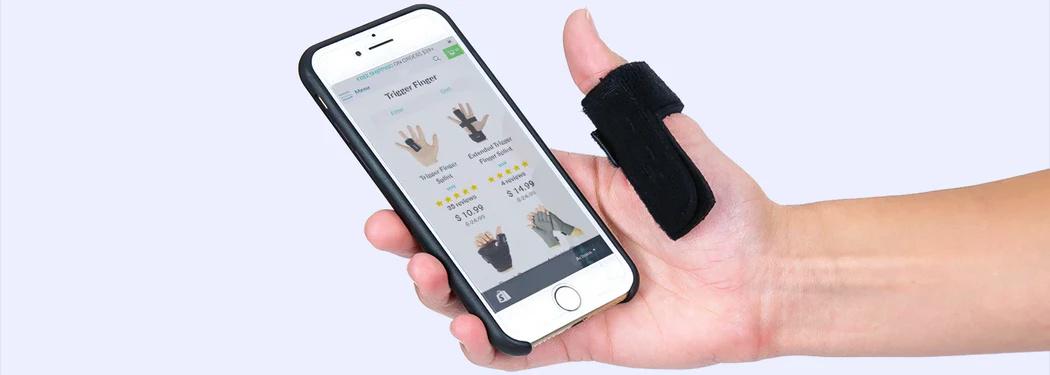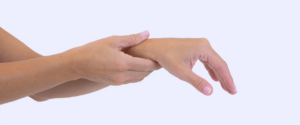Trigger Finger Overview
What is it? Causes Symptoms Recovery Time Prevention
What is trigger finger? A trigger finger injury can be as debilitating as a finger dislocation or fracture. If you are struggling with daily activities due to trigger finger, either at home or at work, educating yourself about this type of injury will make recovery a smooth process. This complete injury guide will give you a general idea about what happens if you have trigger finger, how it develops, and what you can do about it.
What is Trigger Finger?
Trigger finger is an often painful condition that affects one or more tendons—strong bands of tissue that attach muscles to bones and connective tissue. This injury causes the thumb and fingers to get stuck, or lock, after they have been bent, due to inflammation that affects the tendon’s ability to properly guide through the sheathes. Pain comes from inflamed tendons and tendon sheaths that can result in scarring and thickening when left untreated. This will impede the hand’s range of motion and overall function.
This debilitating condition commonly affects women more than men, and it tends to occur most often in individuals who are aged 40 to 60 years old. The hands are meant for continuous daily movement and use, so normal wear will not typically lead to trigger finger.
What Causes Trigger Finger
There are many different variables that can contribute to trigger finger. It most commonly affects the thumb or ring finger. Risk factors for developing trigger finger include the following:
1, Work-related tasks
It is claimed that employees who perform repetitive tasks, such as typing and computer mouse-clicking, are prone to developing trigger finger (tendonitis). The condition can also be caused by a strenuous job that involves the forceful use of the thumb or finger.
2, Extreme sports activities
The risk of trigger finger is higher in contact sports, such as basketball, wrestling, or hockey.
3, Overuse
Musicians, artists, farmers, and industrial workers may suffer from trigger finger due to excessive thumb and finger movements. Even those who spent many hours using handheld devices can get trigger finger.
4, Medical conditions
Long-standing diabetes can affect tissue health in the fingers due to chronic inflammation and other issues related to high blood sugar. Arthritis, particularly rheumatoid arthritis, can also play a role in connective tissue quality of the hands.
5, Other connective tissue disorders
Dupuytren’s disease is a condition that can lead to knots and thickened connective tissue in the hand. This can either cause or exacerbate symptoms of trigger finger.
Trigger Finger Symptoms
The symptoms of untreated trigger finger will progress from mild to severe without addressing underlying inflammation and tissue restrictions. Trigger finger may affect one or more fingers and sometimes both hands, although it is less common. Trigger finger symptoms to watch out for include:
- Warmth, swelling, and tenderness
- Dull, aching pain
- Stiffness in the finger, particularly after waking up
- A bump at the base of the finger or thumb
- A painful clicking or popping sensation
- Inability to straighten the finger
- Finger locking or catching, then suddenly snapping
- Limited hand mobility
Trigger Finger Diagnosis
Contact your doctor right away if you think you may have a trigger finger injury. It can be diagnosed with a comprehensive physical exam of the hand. No imaging tests or lab tests are needed to diagnose trigger finger.
Trigger Finger Recovery Time
The estimated healing time depends on the severity of your injury. Typically, trigger finger can be treated conservatively by addressing underlying medical conditions, modifying use of the hand, and reducing inflammation in the hand. Treatment may include home remedies, physical therapy, medication, and injections. As a last resort for severe cases, surgery may be needed.
If surgery is required, it will be difficult to move your hand and fingers at first. However, with adequate healing and a proper rehab program hand function will gradually return within 6 to 12 weeks.
What to expect after trigger finger surgery:
- Fingers will be swollen and sore for a couple of days up to several weeks.
- You may feel a tingling sensation or numbness near the incision.
- The doctor will remove the stitches about two weeks after the procedure.
To avoid trigger finger surgery complications, it’s important that you know how to care for yourself at home. Get enough sleep and try to go for a morning walk every day. A splint may be utilized for the first few days to weeks to allow proper healing. Your surgeon will give you specific guidelines for hand use. Be sure to change the gauze bandage daily to keep the area clean, but do not use alcohol or hydrogen peroxide because it may slow healing.
How To Prevent Trigger Finger
Trigger finger usually begins gradually. You may notice difficulty with bending or occasional catching that gradually gets worse. Eventually, you may find you can’t straighten your finger due to locking of connective tissue. This can drastically affect your daily activities and quality of life. For prevention, good general health and minimizing hand overuse is crucial. Also, keep in mind that early diagnosis is essential to ensure that you will not suffer any long-term effects.






